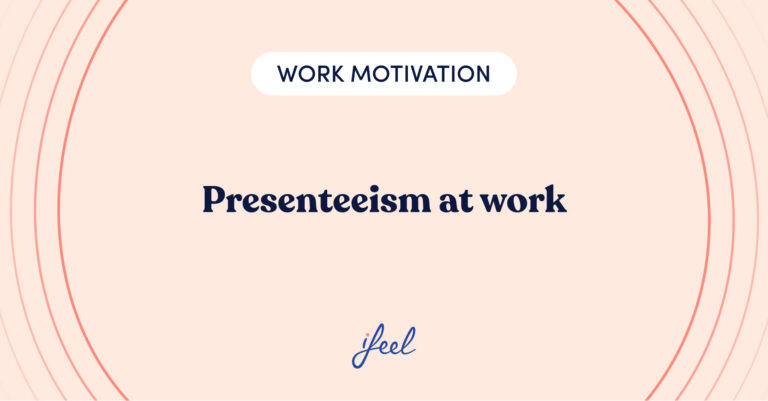Nurturing a culture of mental wellness is fundamental to employees’ health and the company’s overall productivity. Mental well-being is an issue that has always been present in our lives, both inside and outside the workplace. However, companies have now started to break the mental health stigma, creating safe spaces for employees to speak about their feelings and what triggers them.

Why is it important to create a culture of mental wellness in the workplace?
Encouraging a culture of mental wellness is a key driver to achieving a healthy workplace. Well-being is an element that needs to be implemented from the beginning, from the moment a person is contacted through HR for the selection process right up to their exit interview. This way, an employee is taken care of throughout their employee life-cycle. A culture of mental awareness significantly impacts employees’ health and, therefore, has a substantial impact on elements that are part of their work life, such as:
- Talent attraction and retention
- Employee engagement
- Commitment
- Motivation
- Productivity
Moreover, if companies implement a preventative strategy, they can avoid issues arising in the first place, helping them save costs such as absenteeism and sick leave. A European Union study states that average rates of absence across Europe are between 3% and 6% of working time. A reasonable estimate of the cost is about 2.5% of GDP. Therefore, not only does well-being affect the employee in question, but also the company they work for.
Ways to foster a culture of mental wellness
HR managers can implement several actions to create a healthy working environment with healthy employees. We’ve broken it down to basic needs and changes companies can make to foster a culture of mental wellness:
1. Normalize mental health
Although mental health and emotional well-being are topics spoken about, companies play a crucial role in breaking down the stigma around them. Employees need to know that it is okay not to be okay and that they have the help they need from their managers and HR managers. Therefore, those at the top need to speak openly about these issues and make it clear that the company is there is support and help to employees.
2. Listen to specific needs
It is important to emphasize that not all employees have the same mental health triggers. Well-being is a spectrum, and issues can vary from the slightest problems that can be addressed through tools to issues that can heavily affect someone, so they are referred to a specialist. Therefore, they all have individual needs that must be taken care of. This is why if a company implements a well-being program, everyone must have access to various tools, resources, and specialized help.
3. Learn how to switch off
No matter your job title, everyone must take breaks at work during the work day and the year. Firstly, breaks at work are needed to help employees get out of the office (or home office) and get some fresh air, as sitting at a desk for 8 hours indoors is unhealthy.
We must remember that although our jobs are an important part of our lives, we have other aspects to nurture and care for optimal well-being. Secondly, it is a good way to improve team cohesion at the office by socializing and talking about something non-related to work. Finally, switching off by taking annual leave is vital for employees’ well-being as they need to recharge their batteries and take time to do things they love.
4. Encourage physical activity
To foster a culture of mental wellness, it is vital to understand that physical activity also plays a crucial role in improving our mental health. HR managers can encourage this by implementing ‘mini challenges’ within the staff, so they exercise more, for example, a steps challenge in groups over a month. Not only should this help them take up healthy habits, but there should also be incentives for those who win. This way, employees will be motivated to achieve the reward.
Moreover, HR managers can also implement team-building activities involving exercise or sports. This way, employees will see each other in a non-work environment and will build bonds with each other. This is also an excellent way for remote employees to get to know each other and improve team cohesion.
5. Work-life balance
A key aspect of a culture of mental wellness is for employees to have a healthy work-life balance. By giving employees flexible hours, they can work around their personal lives and not just work for their professional lives. As mentioned above, employees have different needs, so HR managers should keep this in mind to give them the chance to balance both aspects. For example, an employee might have a dependent family member, an illness, meaning they must visit a doctor frequently or finish early to pick up their children from school. Everyone has a life outside the work environment, and it is important to consider these factors when applying a well-being strategy.
6. Wellness Action Plan
If you don’t have your hands on it yet, we recommend you download our Wellness Action Plan (WAP). This tool gives an employee and their manager access to a document that they both fill out on what actions they can take to improve their well-being and what they need to avoid specific triggers. It helps identify problems with a preventative approach and fosters communication between employees and their managers.

We care for emotional well-being in organizations
At ifeel, we believe that one of the best ways to achieve a culture of mental wellness is by focusing on employees’ individual needs and helping the HR department with tips and tools to improve their work environment.
Our team of psychologists, experts in well-being at work, has created an emotional well-being program for companies that can guide HR managers in this task and help the rest of the company’s members.
With this service, HR managers can receive personalized, data-driven advice on improving the psychological well-being of the teams in their charge. If you are part of the HR department in your organization, we recommend that you try our program now and see how it could help you.
This program offers all employees a complete mental health care service that they can access in different ways depending on their needs. Those who wish to have access to an online therapy service with one of our psychologists specialized in cases like theirs or interact with one of our professionals to receive emotional support in a more specific circumstance that worries them.
Of course, in our Resources section, you can find different materials that will help you with many of your day-to-day functions as part of the HR department. For example, podcasts, HR guides on various topics (e.g., employee experience or how to design a good HR strategy), or Interviews with leading HR executives. In addition, we have a Psychosocial Risk Factors Template, which you can use to comply with the requirements of the Labor Inspectorate.
We hope you found this post on ways to foster a culture of mental wellness interesting. If you would like more information about our emotional well-being program for companies, simply request it, and we will contact your team as soon as possible.
What is a culture of mental wellness?
A culture of mental wellness refers to an organizational environment that promotes and prioritizes the mental well-being of its employees. It involves creating a supportive and inclusive workplace where mental health is openly discussed, stigma is reduced, and resources are available to support employees’ mental well-being.
Why is a culture of mental wellness important in the workplace?
A culture of mental wellness is important because it acknowledges the significant impact of mental health on overall well-being and work performance. When employees feel supported in their mental health, they are more likely to experience higher job satisfaction, productivity, and engagement. It also helps reduce absenteeism, turnover, and associated costs for the organization.
How can organizations foster a culture of mental wellness?
To foster a culture of mental wellness, organizations can prioritize education and awareness through training and well-being workshops, encourage open communication about mental health concerns, and implement supportive policies such as flexible work arrangements and access to resources. Promoting work-life balance and demonstrating leadership commitment are also crucial in creating a supportive environment.
How can organizations measure the effectiveness of their culture of mental wellness?
To measure the effectiveness of a culture of mental wellness, organizations can use employee surveys to assess satisfaction, awareness, and perceived support. Monitoring absenteeism and turnover rates provides insights into overall well-being and satisfaction. Tracking the utilization of mental health resources and collecting employee feedback and testimonials also contribute to evaluating the impact of mental wellness initiatives on well-being and work performance.










